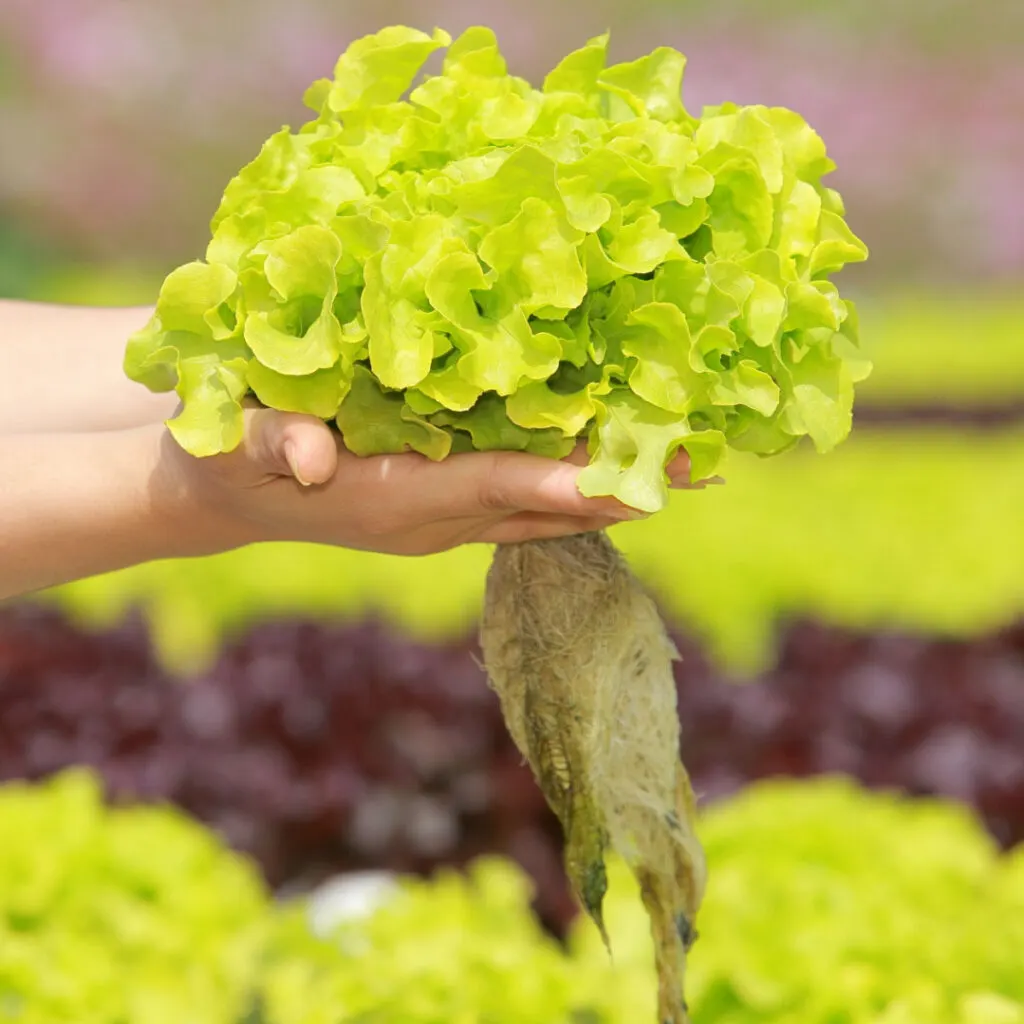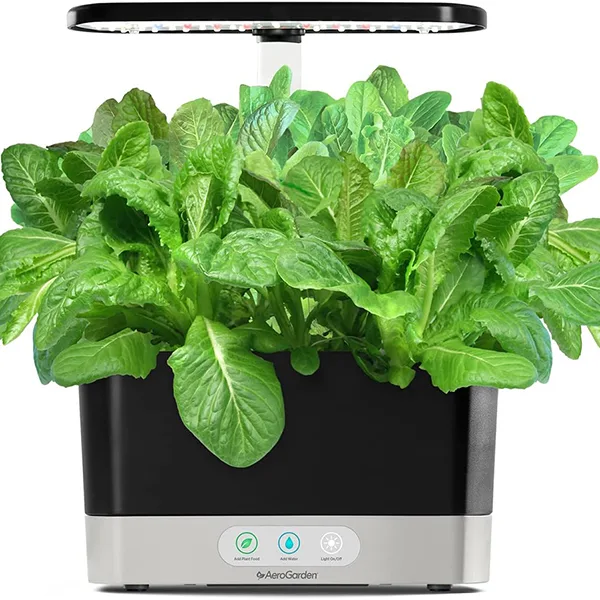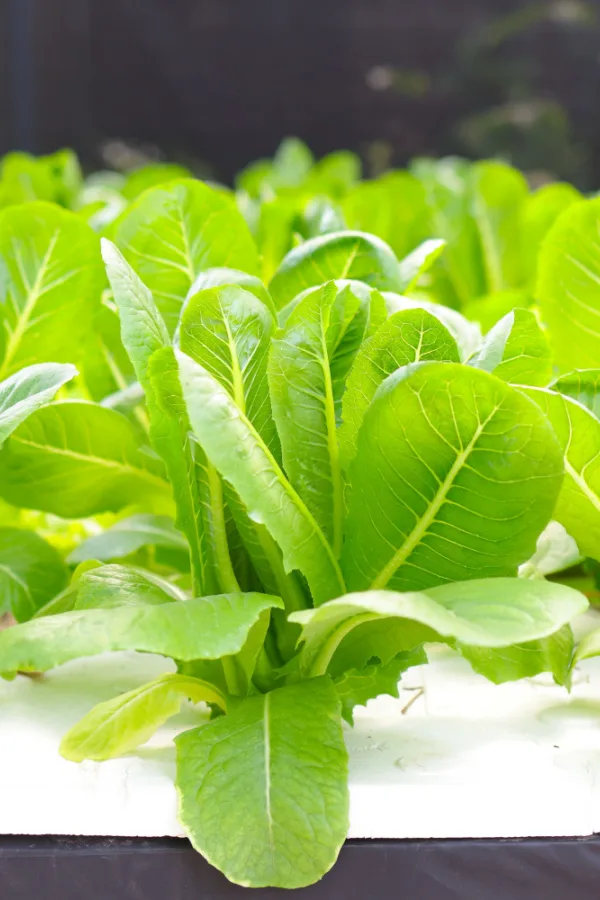One of the easiest ways to enjoy fresh, crispy lettuce – even in the middle of a cold, blustery, snowy winter – is by using a simple, space saving hydroponic kit to grow it indoors!
When the cold of winter arrives, for many gardeners, it spells the end of home grown fresh salads. Although you can extend the season with cold frames, one thing is for sure, it’s never exactly fun heading out in the winter weather to harvest!
But that is exactly where growing lettuce indoors with a hydroponic kits can save the day. Lettuce is actually the perfect hydroponic crop. And not only is growing lettuce indoors easy to do, it also requires little space. Best of all – you don’t even have to have a window to do it!

Growing Lettuce Indoors Using A Hydroponic Kit
Hydroponic kits take up little space and grow lettuce without the mess of soil or the worry of pests. And, you don’t have to fret over your lettuce crop being contaminated by E. coli – a common issue when it comes to commercially sold lettuces.
Lettuce grown hydroponically matures in up to half the time than lettuce grown in the soil does. And, contrary to what you might think, a hydroponic system typically uses up to 90% less water than traditional growing methods. How is that for conserving natural resources!
Choosing A Hydroponic Device
With so many different brands and features, it’s easy to find a hydroponic kit that fits your decor and budget. Most kits are designed to sit right on your countertop. They typically take up as much little space as a toaster or other small cooking appliance.
The basic features of most hydroponic kits include a space for holding water and liquid fertilizer, a tray with pods or growing medium for holding seeds, and a source of light. It’s a growing system all wrapped up into one small package.

Growing lettuce by hydroponics has been around since the 1940s. However, it’s only been recently that in-home kits have become available and popular. Most of the time when you purchase a kit, it will include everything you need to start growing lettuce in your home immediately. (Affiliate Product Link: AeroGarden Harvest Kit and Romaine Lettuce Seed Pods)
Picking The Right Kind Of Lettuce
Lettuce is a great source of vitamins A and C, iron, fiber, and folate. In addition, it is made up of around 95% water, which helps increase your daily hydration. It has also been found to have anti-inflammatory, anti-diabetic, and cholesterol-lowering components.
It is also one of the fastest maturing crops, making it perfect for indoor growing. Often, you can start harvesting leaf lettuce in as little as a month after germinating.
You can grow almost every type of lettuce available hydroponically. However, most people tend to lean toward loose-leaf varieties. They germinate easily, are quick to grow to maturity, and allow you to harvest as little or as much as you need.

Some of the more popular varieties for growing in hydroponic kits include butterhead, romaine, arugula, red leaf, and green leaf lettuce. (Affiliate Product Link: Eden Brothers’ Gourmet Salad Blend Seeds)
Planting Lettuce Seeds In Hydroponic Kits
The exact steps you take to grow your lettuce seeds will vary slightly depending on the brand of hydroponic kit you own. However, in general, the process is similar. Just be sure to always read the instructions that come with your kit in case they vary slightly.
First, take your growing medium and sow a couple of lettuce seeds into each pod. Not all of the seeds will likely germinate, so by sowing a few seeds each, you have a better chance of having at least one sprouting.
Next, add water to the designated space or container. When the tray with the seed pods is placed over the water, they should touch the water and soak up the moisture. If not, you may need to pre-moisten the growing medium before adding the seeds. Add any provided liquid fertilizers or plant food at this time as well if indicated.
Most hydroponic kits come with plastic covers or domes to place over the growing medium. These are only to be kept in place until the seeds germinate. They help to keep moisture in place which will speed sprouting.

Lettuce seeds typically germinate in around 1 to 4 days when grown in hydroponic systems, which is much quicker than in the ground. In fact, in the ground, it usually takes up to 7 to 14 days. See: The Best Spring Garden Seed Crops To Plant Early In The Garden
Watching The Lettuce Grow
One of the best parts of using a hydroponic kit is that they have the all important grow lights included. The lights should be set to stay on for at least 10 to 14 hours each day for lettuce. Keep the grow lights an inch or two above the seedlings and move as needed.
When the seedlings are a couple of inches tall, thin them so you only have one plant per growing medium (or one seedling every inch for leaf lettuce varieties). Add any supplied liquid fertilizer as needed or indicated in your hydroponics kit’s instructions.
The key to using a hydroponic kit successfully is keeping the growing medium moist. Don’t allow the water to drop low since the roots need the water in order to grow. Some kits feature a warning light if the water level drops below the recommended amount. Add more water as needed while the lettuce is growing.
Harvesting Fresh Lettuce
After only about 4 to 6 weeks, you should be able to start harvesting your leaf lettuce. Start by harvesting when the plants are at least 4 inches tall. For your first cutting, take only a few leaves.

Use a small pair of snips or scissors to cut at the base of each leaf, working from the outside of the plant inward. This will allow the lettuce plant to continue growing and pushing out new leaves, helping you harvest more over a longer period of time.
You should be able to harvest from the same plants for several weeks, if not longer. If the leaves start to become bitter after a while, it’s time to pull the old plant and start sowing new seeds in its place.
Thankfully, since your hydroponics kit is in a controlled environment, you can continue to grow, harvest, and sow seeds from it all year long!
Follow Our Facebook Page For Even More Great Tips! Simple Garden Life Facebook Page
Simple Garden Life is a website dedicated to keeping gardening fun, simple and enjoyable! We publish two new articles each week along with a new garden podcast episode every two weeks. This article may contain affiliate links.
